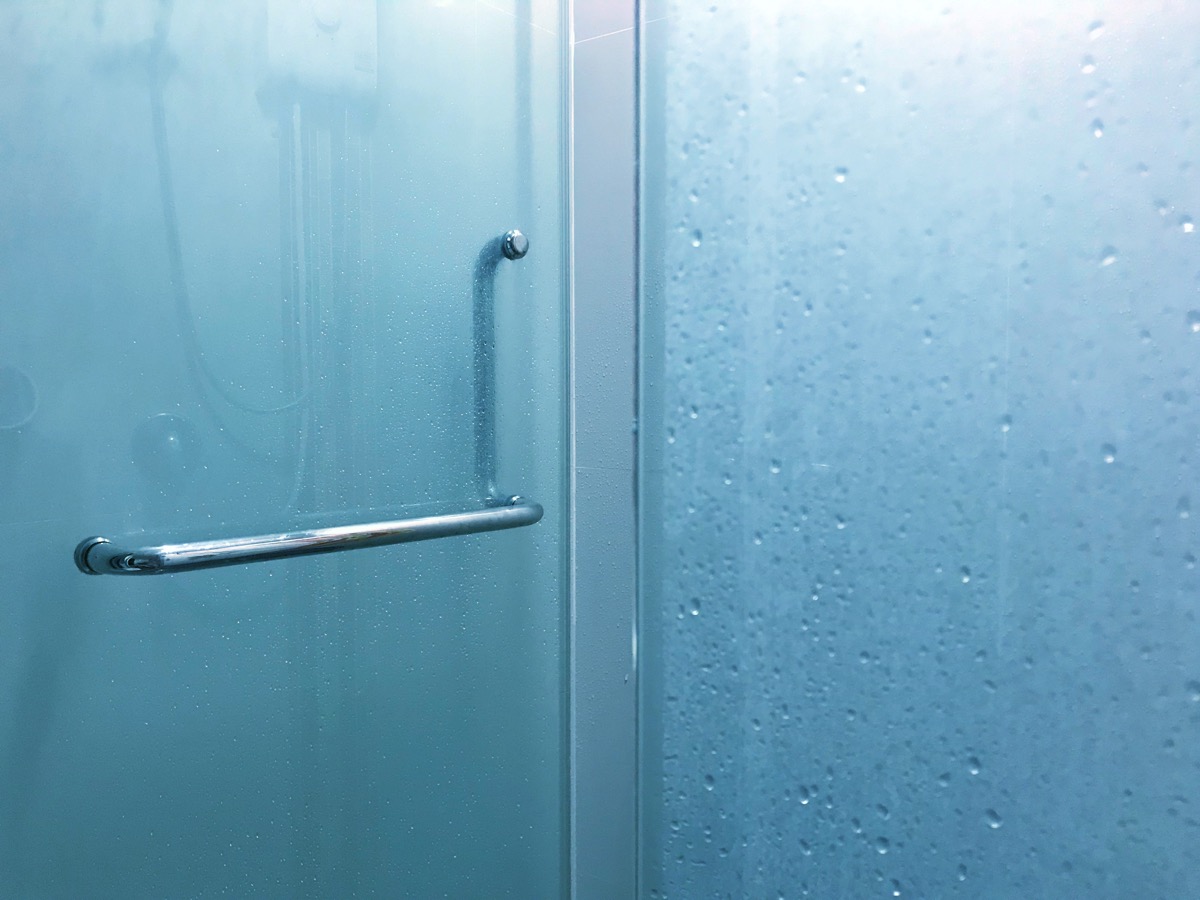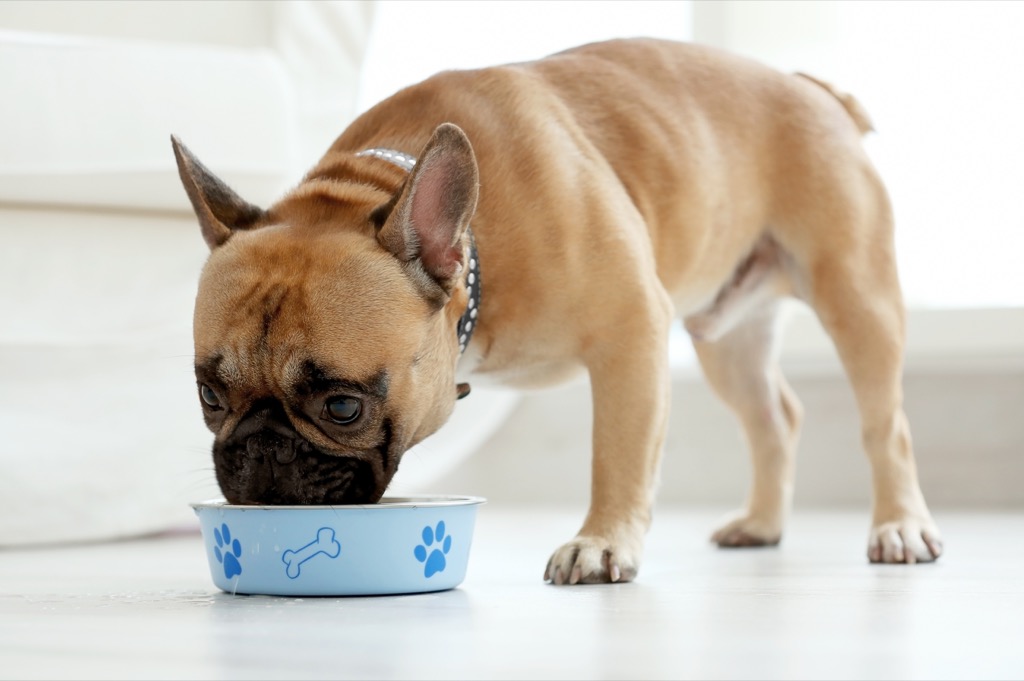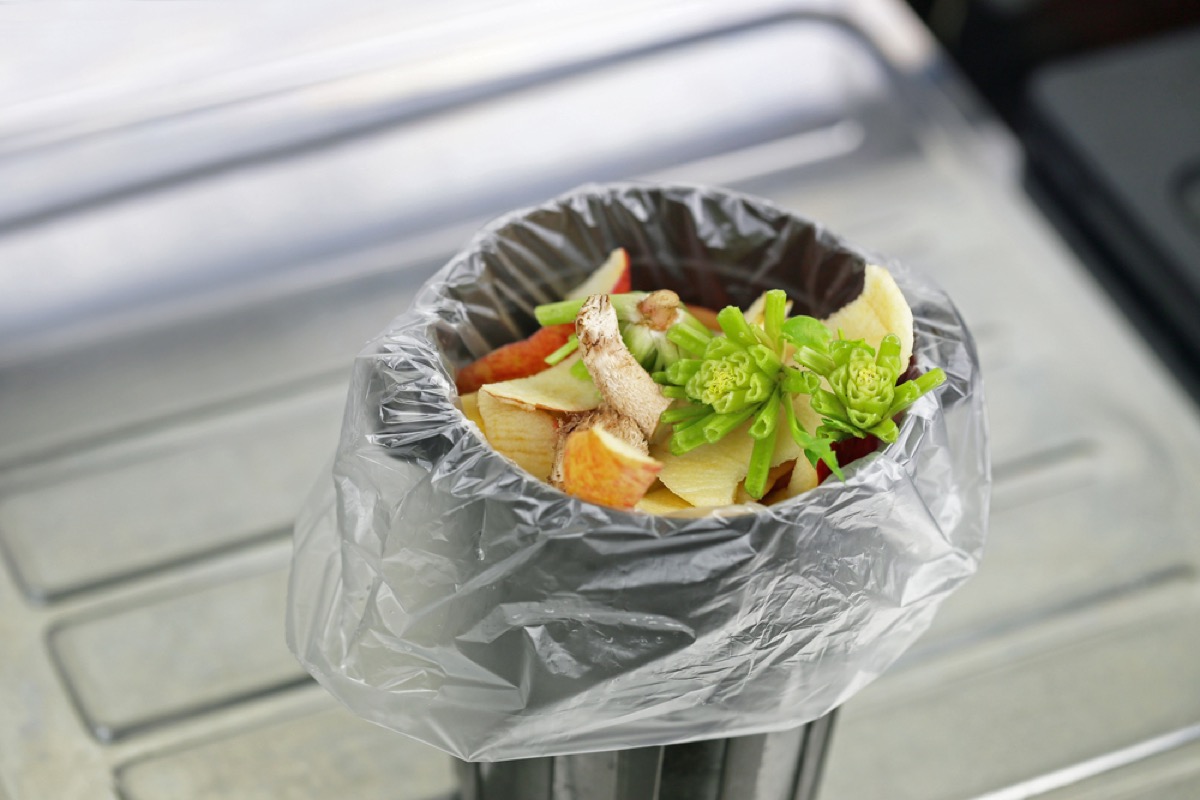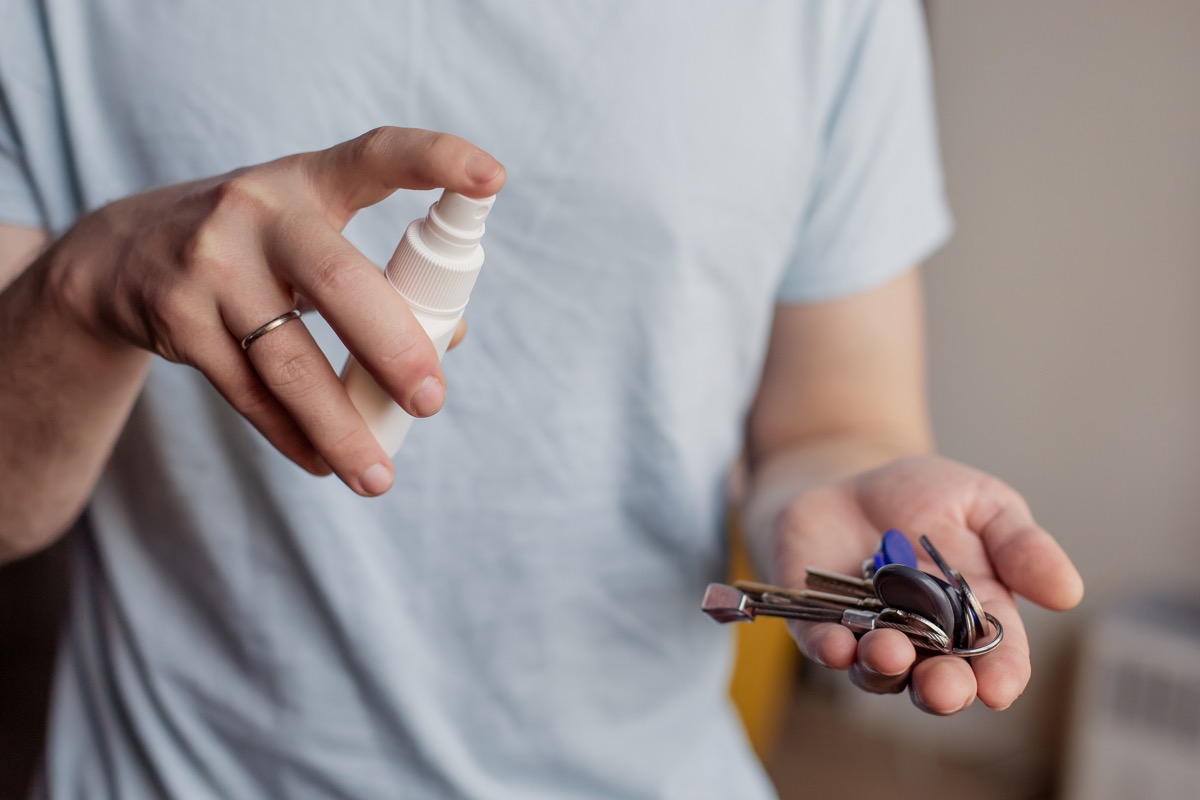20 Things in Your Home You Didn’t Realize You Should Be Cleaning

You vacuum, you mop, and from time to time, you even break out the duster—that must mean your house is pretty clean, right? Not exactly. There are countless areas of your home—and objects within it—that you didn’t know you should be cleaning, but are far filthier than you’d ever imagined.
So, where are these germy areas found? Read on to discover what professionals say you should be cleaning—but aren’t. And if you want to spruce up your space, check out these 20 Genius Products That Make Cleaning So Much Easier.
1
Your windowsills

Just because your windowpanes are shiny and clear doesn’t mean you’ve finished cleaning.
“Windowsills collect a lot of dust and moisture that causes bacteria to grow, which in turn can cause damage,” explains Benjamin Nguyen, owner of Full Color Cleaners, who recommends wiping those sills down regularly with a wet cloth. And if you want to avoid an expensive error, check out these 23 Common Cleaning Mistakes That Experts Say Actually Ruin Your Home.
2
Under your shower door

Sure, you’ve scrubbed the tub, but have you looked under the shower door?
“You should be cleaning underneath the shower door seal and removing all the soap scum before it becomes mildew and starts spreading,” says Paula Garrison, owner of Maid Solution. To do so, Garrison recommends mixing vinegar and water in a spray bottle, coating the surface, and scrubbing. When you’re finished, apply a diluted bleach solution and wipe dry after five minutes.
3
Your shower head

Your shower head can be one of the most germ-filled places in your home, according to Matthew Gebert, research technician in the Fierer Laboratory at the Cooperative Institute for Research in Environmental Sciences at the University of Colorado in Boulder. So, if you’d like to avoid multiple strains of bacteria falling onto your clean body every day, clean your shower head with a toothbrush and bathroom cleaner at least once a week. To ensure that a minimal amount of bacteria builds up between cleanings, stick to a metal shower head, as the plastic variety tends to gather more grime.
4
Your bathroom décor

Even though your bathroom décor may not seem particularly grimy, there are over 452 bacteria per square inch on the shelves where your powder room accessories rest. So, wipe down your bathroom décor at least once a month with disinfectant to settle the score with those household germs.
5
Your toothbrush holder

According to one study from cleaning experts NSF International, 27 percent toothbrush holders contain harmful bacteria like Salmonella and E. coli. In order to stem the spread of this bacteria in the future, clean your toothbrush holders with bathroom disinfectant at least once a week.
6
Your hairbrush

It’s not enough to just pull stray hair from your hairbrush’s bristles, says Francesca Fusco, a dermatologist in New York City. At least once a month, you should be in the habit of removing all stray hairs by hand (or with scissors, for the difficult strands), shampooing the brush, and letting it sit out overnight. And if you decide to outsource your cleaning efforts, check out these 20 Secrets Housekeepers Won’t Tell You.
7
Your pet’s food and water dishes

If you’re not giving your pet’s bowls a thorough scrub-down on a regular basis, they’re likely to become a breeding ground for bacteria.
“A quick daily rinse with soap and water is often enough, but it’s even better if you can use your dishwasher,” says Matt Clayton, founder of Pet Hair Patrol. “Washing the bowl thoroughly will remove any nasty bacteria like E. coli, MRSA, listeria, and salmonella—even mold and yeast,” Clayton explains.
8
Your pet’s toys

The only thing dirtier than your dog’s dishes is that squeaky toy that they love so much. According to research from NSF International, your furry friend’s toy collection is among the ten most germ-infested places in your home, often containing coliform bacteria (including Staph bacteria), yeast, and mold.
You can wash these toys on the top shelf of your dishwasher or in the washing machine, placed on the sanitizing cycle. For your pet’s protection, throw away any toys with ripped seams (places where mold can spread) or any toys chewed to the point of having sharp edges, as they could possibly puncture the dog’s mouth.
9
Under your sofa

It may not be the easiest place to clean, but make no mistake: that space under your sofa is a hotbed of dirt and germs.
“You’ll be amazed at what food or dirt gets pushed under, especially if you have a hardwood floor,” says Richard Kennedy, owner of The Vacuum Experts. His recommendation? Making a concerted effort to get under the couch every two or three times you break out the vacuum, especially if you’re a pet owner.
10
Behind your stove

Those splashes and spills when you’re cooking don’t just disappear into thin air—they usually end up behind your stove.
“You should be making the effort at least once a month to get your stove out and give it a proper clean, otherwise, when you eventually do it, you’ll be in for a nasty surprise!” says Kennedy.
11
Your kitchen sponge

That sponge you’ve been using to clean your home is pretty germy itself. Fortunately, sanitizing it is simple: “You can usually saturate it with water and then zap it in the microwave,” says Kathy Turley, director of marketing for Home Clean Heroes.
However, that doesn’t mean you should keep the same sponge forever. “If it looks dirty, smells dirty, or is starting to come apart, it’s definitely time to say goodbye and replace it,” says Turley.
12
Inside and behind your fridge

If you’re not regularly cleaning the inside of your fridge, it’s high time you started. Researchers from Microban Europe discovered multiple dangerous strains of bacteria just inside your refrigerator (you know, the place where your next meal is waiting).
“In addition to wiping down the doors and the inside of the refrigerator, make sure to clean the top, underneath and most importantly, behind your refrigerator,” says Turley. “When the coils on the fridge get clogged with dust, grime or even pet hair, it can hinder the fridge’s ability to do what it does—keep your food cold.”
13
Your coffee maker

Your coffee maker may be delivering more than just your morning pick-me-up. According to a 2011 NSF household study, the reservoir of a typical coffee maker as the fifth most germ-laden spot in your home. To clean out your coffee maker, run the removable parts through the dishwasher, and clean the reservoir with a mix of vinegar and water. And for more ways to keep your home clean as a whistle, check out these 25 Totally Gross Things You Use Every Day and Should Definitely Clean.
14
Your ice maker

According to The Housekeeping Channel, if even the freshest ice cubes come out of the machine appearing cloudy and smelling weird or stale, it might be a good time to sanitize. Regardless of the condition of your ice, however, you should still make a habit of cleaning your ice maker at least twice a year to avoid consuming any unwanted bacteria.
15
Your dish rack

The dish-drying rack is another place that you rely upon to stay clean and bacteria-free—so why aren’t you making the effort to keep it spotless? As reported in The Atlantic, while you should be steering clear of hand-washing and opting to wash your dishes in a dishwasher instead, if you’re don’t have one, there’s no need to panic. For a truly clean hand-washing experience, be sure to keep the dish rack dry at all times, and keep the rack clean of grime by washing it with soap and hot water weekly.
16
Your reusable grocery bags

Those reusable bags are great for the environment, but they still require a thorough cleaning, according to the American Cleaning Institute. In fact, you should be cleaning them after each grocery trip, following the care guidelines laid out on the fabric care label. Along with these deep cleans, avoid storing your bags in the car, where heat and moisture can trigger further bacterial growth.
17
Your trash cans

Yes, they’re regularly filled with trash—but that doesn’t mean your trash cans don’t deserve a good cleaning from time to time.
“Just get an all-purpose cleaner (or dilute dish soap with water) and spray over the outside and inside of the can,” suggests Turley. Afterward, she recommends scrubbing the can, rinsing it, and drying it off with a microfiber cloth. If your can’s especially stinky, Turley recommends adding a few dryer sheets at the bottom of the can to tackle any lingering odors.
18
Your washing machine

Those magical machines that allow us to wear clean clothes every day are also subject to the spread of bacteria. According to green living expert Leslie Reichert, if your clothes smell like mildew directly after a wash cycle, it might be time to do a deep clean of the machine. Fortunately, the deep clean doesn’t require much effort on your part—just set your washer on the cycle with the hottest water and add a little vinegar. And if you want to protect yourself, this is The Worst Thing You’re Doing With Your Laundry Right Now, CDC Says.
19
Your yoga mat

You’re likely sweating on your exercise equipment on a regular basis, but how often are you wiping those items down? According to Sky Meltzer, CEO of Manduka, a major yoga mat retailer, you should be wiping down your mat after every workout with a cloth and equal parts water and apple cider vinegar.
20
Your keys

Your keys provide a breeding ground for multiple kinds of bacteria, says Amanda Kita-Yarbro, a Public Health Madison epidemiologist. The good news? Routinely wiping your house keys down with sanitizing wipes can reduce the number of germs you’re transmitting from yourself to others. And for more ways to keep your space spotless, check out these 50 Easy Home Hacks That Will Instantly Improve Your Life.